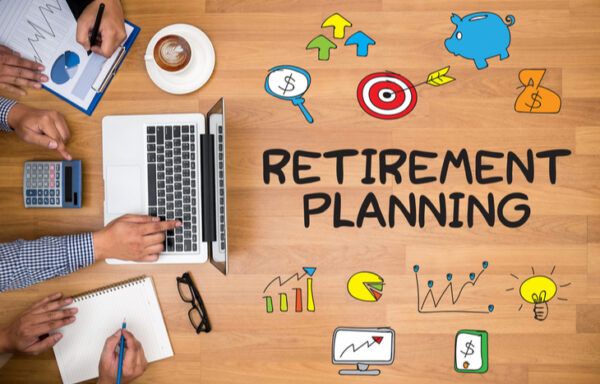What Is a 408(k) Plan?
While most of us have heard of the traditional 401(k) retirement plan, it’s far from the only type of account offered. For example, have you heard of a 408(k) plan? This employer-directed retirement account is a common one for small businesses – usually those with fewer than 25 employees. In fact, it’s actually a simplified version of the 401(k) program. This simplicity is what makes it feasible for small companies.
If you’re working for a startup or a budding enterprise that offers a 408(k) plan, it’s smart to take advantage of it. Here’s what you should know about how a 408(k) account affects your retirement savings.

An Overview of 408(k) Plans
The first and most important thing to know about 408(k) plans is that they’re a form of Simplified Employee Pension (SEP) plan. An SEP is a type of IRA (individual retirement account) that’s established and directed by the employer. Low overhead and startup costs are what make SEPs appealing to small business owners. To qualify for a 408(k) plan, employees must meet specific criteria, including…
- Being at least 21 years old
- Having worked for the company for at least three of the past five years
- Having earned at least $600 from the company in the current year
- Not being covered by a union retirement plan
- Not being a nonresident alien employee.
The biggest thing to understand about 408(k) plans is that they’re subject to employer-only contributions. This means employees do not make contributions. Instead, employers specify a percentage of the employee’s annual income to contribute. That number can be up to 25% of the employee’s income, but no more than $58,000 annually. Employees are immediately vested.
The Difference Between 401(k) and 408(k) Plans
As mentioned, 401(k) and 408(k) plans are similar in many ways. The key difference is that a 408(k) is subject to employer-only contributions. This is in contrast to a 401(k), where it’s the employee’s responsibility to make contributions – which a company may choose to match. Because employers control contributions for a 408(k) plan, it’s important that contribution percentages remain equal across all employees enrolled. This is part of anti-discrimination stipulations.
In making contributions on behalf of employees, businesses benefit from tax deductions based on the amount contributed. Moreover, once they have an account, employees have control over how they want to invest their money – unlike with a 401(k), which is usually limited to funds handpicked by the employer.
All in all, 408(k) plans offer employees less control over contributions but more control over how they’re investing for the future. 401(k) plans offer the reverse: Employees dictate contributions and employers determine investment criteria.
Who Benefits From 408(k) Plans?
Small companies with fewer than 25 employees typically benefit from the low cost of offering a 408(k) plan. Even more popular are sole proprietorships. 408(k) programs allow business owners to fund retirement without the limits that can come with a self-directed IRA. It effectively gives them 401(k) opportunities that would not otherwise be available.
While sole proprietorships and partnerships benefit greatly from 408(k) plans, there are stipulations to be aware of. These plans are still subject to a 25% salary contribution cap and a $58,000 annual contribution limit. Moreover, business owners may not qualify for a 408(k) plan if their income exceeds $290,000 annually.
It’s important to note that union employees aren’t generally eligible for 408(k) programs since collective bargaining agreements entitle them to other retirement benefits.
Risks and Benefits From 408(k) Plans
The clear benefit of a 408(k) plan is that it’s a very simple way for small businesses and sole proprietorships to offer retirement options. This incentivizes small businesses and startups to make retirement plans available.
Moreover, though employer-sponsored, a 408(k) plan is still an SEP IRA, which means it’s yours. You can invest how you want and control your portfolio allocation as you see fit. For savvy investors, this can be a powerful opportunity. By the same token, it means you’ll need to reallocate and rebalance as your situation changes.
Keep in mind that because a 408(k) plan is employer-sponsored, employees don’t always have control over contributions. For example, these plans allow employers to skip contributions in years when revenue is down. This means losing compounding power in your retirement account. Moreover, contributions aren’t mandatory and employers set the contribution percentage. This could mean minimal contributions on your behalf.
The good news is that if a 408(k) plan doesn’t afford you the retirement saving power you want, you’re still eligible to contribute to a Roth IRA. Just be aware of contribution limits for retirement accounts during the current fiscal year.
How to Make the Most of a 408(k) Plan
Like a 401(k) or a 503(b) account, a 408(k) plan is, at its core, a retirement vehicle. While you don’t have control over the contributions, you do have control over allocation. It’s important to keep a diversified portfolio and to pursue compound interest at a risk level that you’re comfortable with. For some, that means a strong position in growth stocks. For others, it’s a dividend-heavy portfolio with a DRIP (dividend reinvestment plan).
To get ahead of your retirement, sign up for the Wealthy Retirement e-letter below. You will learn from today’s best retirement experts about investing, passive income and planning for retirement.
What is a 408(k) plan? For many Americans and the companies that employ them, it’s an easy way to start saving for retirement. Each employer contribution takes you one step closer to a comfortable retirement. It’s up to employees to manage their accounts and make decisions that positively impact them when the time to retire comes around.





